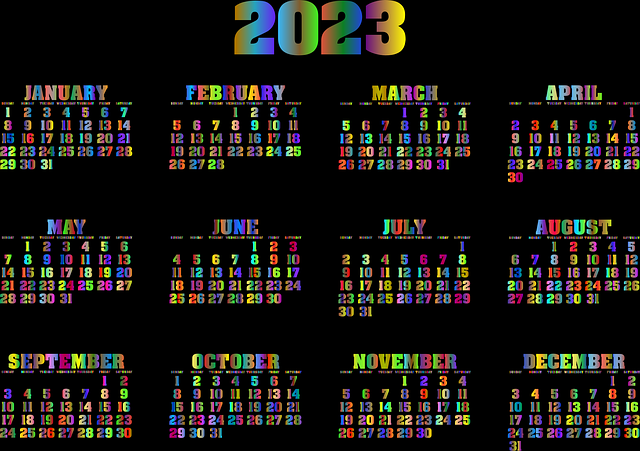Automated scheduling solutions featuring registered training organisation calendar syncing are vital for addressing inefficiencies and errors in manual RTO planning. These tools integrate with management systems to update course schedules in real-time, saving time and enhancing accuracy. By choosing the right calendar tool with automated scheduling, integrated platforms, and intuitive interfaces, RTOs can streamline operations, improve communication, and provide a better learning experience. Implementing these solutions involves assessing needs, selecting robust tools, integrating them into existing systems, ensuring data security, and providing staff training for successful adoption.
In today’s digital age, efficient operations are non-negotiable for thriving Registered Training Organisations (RTOs). Navigating complex manual scheduling presents significant challenges, leading to potential student disengagement and missed opportunities. This article delves into the transformative power of automated scheduling for Registered Training Organisations through calendar syncing. Discover how embracing boost efficiency with calendar tools for RTOs can streamline operations, enhance collaboration, and unlock new levels of success.
- Understanding the Challenges of Manual Scheduling for RTOs
- Benefits of Automated Calendar Syncing for Efficient Operations
- Key Features to Look For in a Registered Training Organisation Calendar Tool
- Implementing Calendar Syncing: A Step-by-Step Guide
- Best Practices and Future Trends in RTO Calendar Management
Understanding the Challenges of Manual Scheduling for RTOs

Manual scheduling for Registered Training Organisations (RTOs) can be a complex and time-consuming task, often leading to inefficiencies and errors. With increasing demands for flexible learning options and dynamic course timetables, RTOs are struggling to keep up using traditional methods. Without robust calendar syncing capabilities, scheduling becomes a labyrinthine process, where instructors and administrators manually coordinate dates, times, and resources across various systems. This not only increases the risk of mistakes but also hampers productivity, leaving staff with little time for other critical tasks.
Automated scheduling solutions are pivotal in addressing these challenges. By implementing calendar syncing tools tailored for RTOs, organisations can boost efficiency significantly. These tools integrate seamlessly with existing management systems, enabling real-time updates and synchronisation of course schedules. As a result, administrators save valuable time and effort, while ensuring accurate and up-to-date information is accessible to all stakeholders. This ultimately enhances the overall learning experience for students and improves the operational effectiveness of RTOs in today’s competitive landscape.
Benefits of Automated Calendar Syncing for Efficient Operations

In today’s fast-paced world, time is a valuable resource for any organisation, especially Registered Training Organisations (RTOs) that juggle numerous responsibilities and deadlines. Automated calendar syncing offers a game-changing solution to streamline operations and boost efficiency. By integrating scheduling tools, RTOs can effortlessly manage various tasks, from course registrations to assessment timings, ensuring every event is accurately logged and synchronised across multiple platforms.
This modern approach eliminates the hassle of manual data entry, reducing human errors and saving valuable time. Automated calendar syncing provides a centralised hub for all events, allowing staff to access and update information in real-time. As a result, RTOs can enhance communication with stakeholders, students, and instructors by providing timely reminders, scheduling changes, and important updates, fostering a more organised and responsive work environment.
Key Features to Look For in a Registered Training Organisation Calendar Tool

When choosing a calendar tool for your Registered Training Organisation (RTO), look for key features designed to streamline operations and boost efficiency. Automated scheduling is a must-have, enabling seamless integration with existing systems to automatically generate and update class timetables based on instructor availability, course schedules, and student sign-ups. This automates what used to be a manual, time-consuming process, significantly reducing the risk of human error.
Additionally, seek tools offering robust calendar syncing capabilities that harmonise your RTO’s scheduling with various platforms and devices. This ensures accessibility and up-to-date information for your staff and students, fostering better communication and organisation. Effective calendar tools should also include intuitive interfaces for easy navigation and management, along with features like recurring events, reminders, and collaboration options to facilitate efficient planning and coordination.
Implementing Calendar Syncing: A Step-by-Step Guide

Implementing calendar syncing for your Registered Training Organisation (RTO) is a strategic move to enhance operational efficiency. Here’s a step-by-step guide to get you started:
1. Assess Your Needs: Begin by understanding your RTO’s unique requirements. Identify the types of events and activities you need to sync, whether it’s training sessions, meetings, or workshops. Evaluate existing tools and platforms to ensure they align with your needs.
2. Choose a Calendar Syncing Tool: Select a robust calendar syncing software designed for educational institutions. Look for features like automated scheduling, seamless integration with popular calendars (Google, Outlook), real-time updates, and accessibility across devices. Ensure it complements your existing RTO management systems for a streamlined experience.
3. Integrate with Existing Systems: Configure the chosen tool to connect with your RTO’s database or management platform. Map data fields accurately to ensure event details, including dates, times, and locations, are automatically synced. Test the integration thoroughly to avoid disruptions in the live environment.
4. Set Up User Access: Create user accounts for relevant staff members, granting them access to manage and view events. Define permissions based on roles—instructors might need full access, while administrators should have oversight capabilities. Ensure data security by implementing strong passwords and two-factor authentication.
5. Test and Train: Conduct thorough testing to ensure the syncing process functions seamlessly. Invite a pilot group to test the system, gather feedback, and make necessary adjustments. Provide adequate training sessions to help staff navigate the new calendar tool effectively.
Best Practices and Future Trends in RTO Calendar Management

Effective calendar management is no longer a nicety but a necessity for Registered Training Organisations (RTOs) to thrive in today’s competitive landscape. Best practices involve leveraging automated scheduling tools that seamlessly integrate with existing systems, ensuring accurate and real-time updates across all platforms. This streamlines course bookings, resource allocation, and instructor availability, enhancing overall efficiency.
Looking ahead, the future of RTO calendar management points towards even more sophisticated solutions. Artificial intelligence and machine learning could play a pivotal role in predicting demand, automatically generating schedules based on historical data, and identifying patterns to optimise resource utilisation. These trends promise to boost productivity, improve student experiences, and provide RTOs with a competitive edge in the ever-evolving training industry.
Calendar syncing is no longer an option but a necessity for modern Registered Training Organisations (RTOs) aiming to boost efficiency and enhance student experiences. By adopting automated scheduling solutions tailored for RTOs, institutions can significantly reduce manual effort, minimise errors, and streamline course offerings. With the right calendar tool featuring intuitive interfaces, robust integration capabilities, and data security measures, RTOs can future-proof their operations and focus on delivering high-quality training.
